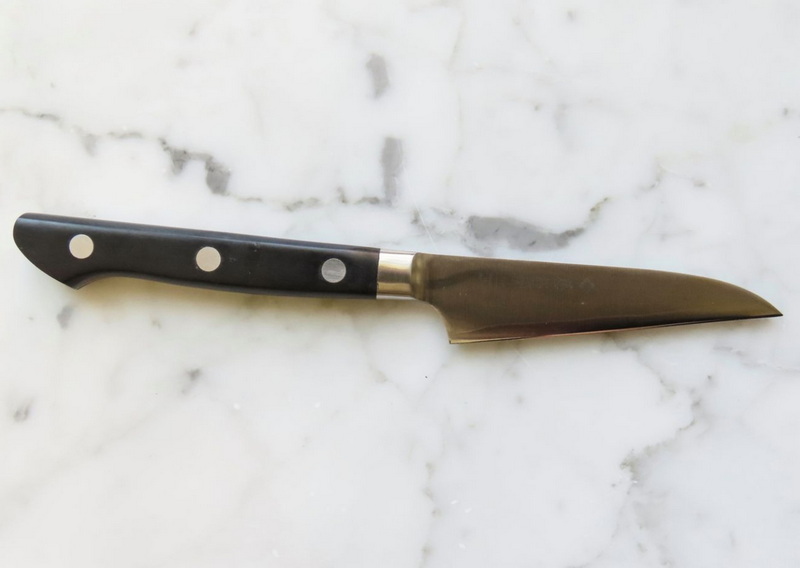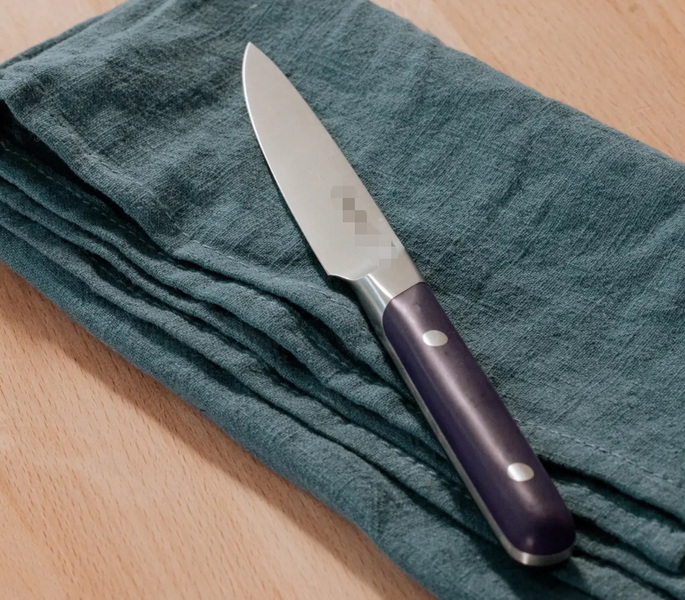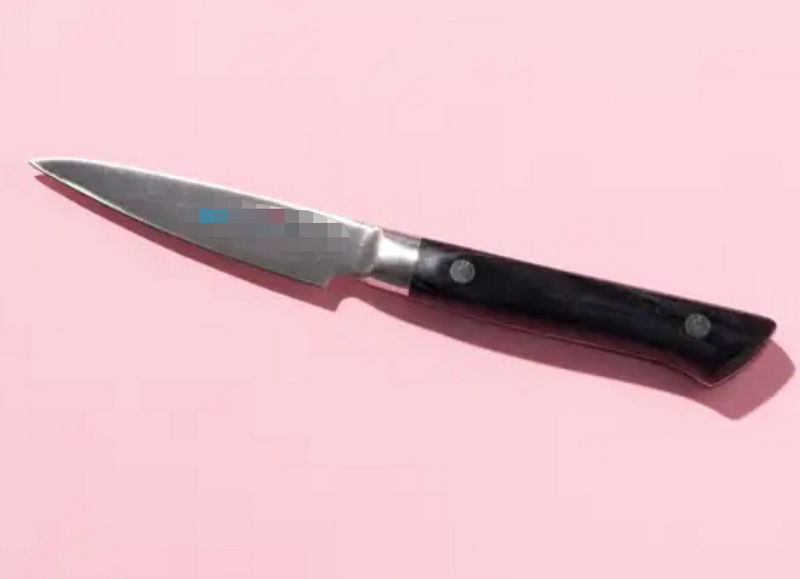- All
- Product Name
- Product Keyword
- Product Model
- Product Summary
- Product Description
- Multi Field Search
Views: 222 Author: Ann Publish Time: 2025-10-24 Origin: Site











Content Menu
● Classic Japanese-inspired Paring Knife designs
● Western-styled Paring Knife designs
● Multitask and specialized Paring Knife variants
● Ergonomics and performance factors driving popularity
● Materials and manufacturing considerations for OEM buyers
● FAQs (condensed to a single, comprehensive set)
>> Q: What is the most versatile Paring Knife length for international markets?
>> Q: Which steel types best balance edge retention and ease of maintenance for OEM Paring Knives?
>> Q: How important is handle design in market acceptance?
>> Q: Can customization distinguish Paring Knife lines in crowded markets?
>> Q: What documentation and care guidance should accompany OEM Paring Knives?
Paring Knife is a foundational tool in professional kitchens and home setups worldwide. Its compact blade, precise tip, and ergonomic handle enable delicate peeling, trimming, and intricate detail work that larger knives cannot accomplish with the same finesse. For foreign brand owners and OEM partners, the Paring Knife represents a versatile entry point into private-label branding, with opportunities to differentiate through blade geometry, steel selection, handle design, and packaging. This article surveys the most popular Paring Knife designs among international buyers, highlighting design features, materials, manufacturing considerations, and marketing strategies that resonate across regions from North America to Europe and Asia-Pacific. The goal is to illuminate design choices that maximize performance, durability, and brand appeal, while keeping production efficiency and cost controls in mind. Throughout, Paring Knife is reiterated as a central keyword to reinforce search visibility and product relevance for OEM programs.

Japanese-influenced Paring Knives are prized for their extreme sharpness, refined balance, and thin blades that enable precise micro-cuts and flawless peeling. Typical blade lengths range from 60 to 80 millimeters, with 75 millimeters being a popular mid-point for versatility. The geometry often emphasizes a slender, pointy tip and a narrow grind that reduces drag and enhances control during delicate tasks like deveining citrus segments or trimming minute flesh from vegetables.
- Blade geometry and edge geometry: A single-bevel or micro-bevel edge profile is common in high-end Japanese-style Paring Knives. For OEM partnerships, offering a choice between a traditional single-bevel for specialty tasks and a dual-bevel for universal use can satisfy both professional kitchens and training institutes across markets.
- Steel and hardness: High-carbon stainless steels, with hardness in the 58–62 HRC range, provide a fine balance between edge retention and sharpenability. For regions with humid climates or saline environments, consider corrosion-resistant variants or coating options to extend life in commercial settings.
- Handle ergonomics: D-shaped or oval handles with light-weight composites are favored for long prep sessions, reducing fatigue and providing a secure grip when performing precision cuts near eyes or blemishes on fruit skins.
- Market fit: International buyers value a Paring Knife that can handle fruit prep and intricate vegetable trimming with minimal micro-damage to surfaces, while offering branding opportunities through laser engraving of logos on the blade or handle.
Western-style Paring Knives tend to feature a more robust blade profile, thicker tangs, and heavier feel that can convey durability and reliability in busy kitchens or institutions. These designs are attractive to buyers seeking heavy-duty performance for tasks like coring, trimming tough skins, and delicate deboning in compact spaces.
- Steel and finish options: Stainless steel grades in the 420–440 range, AUS-8 equivalents, or other high-alloy stainless steels are common for their balance of hardness, corrosion resistance, and cost-efficiency. Some OEM programs offer coated blades to improve rust resistance in commercial environments.
- Handle materials: Pakkawood, resin-infused composites, and durable plastics like POM (polyoxymethylene) are standard. For premium lines, stabilized wood or micarta provide a premium aesthetic while maintaining grip and longevity.
- Design cues: A slightly heavier grip and a fuller tang can communicate durability, particularly for buyers from mass-market retailers and institutional kitchens seeking reliable performance with lower maintenance needs.
- Market fit: The Western audience often prioritizes affordability per unit, consistent performance, and clear branding opportunities on both blade and handle surfaces.
Beyond canonical designs, several variants maximize versatility for international buyers who want a single tool to cover multiple micro-tasks in compact spaces or school/clinic settings.
- Serrated and micro-serrated variants: Serrated or partially serrated paring blades aid in handling crusted fruit and skin with tough rinds, offering a specialty option within an OEM family to address diverse culinary traditions.
- Damascus-inspired aesthetics: Layered or Damascus-like patterns on the blade surface enhance branding appeal and perceived value without compromising core performance. For OEM programs, decorative flattening techniques or etched patterns can differentiate product lines in competitive marketplaces.
- Curved noses and detail blades: Curved or slightly upturned profiles enable you to access tight corners and skirting areas around eyes, seeds, and pits, increasing precision in garnish work and decorative trimming.
- Handle innovations: Textured wraps, color-coding for workstations, and lightweight composite materials that maintain a comfortable grip even during extended prep sessions are increasingly sought after in global markets.

The success of Paring Knife designs in international markets hinges on ergonomics, balance, edge geometry, and material durability. Buyers assess how a knife feels in hand during long prep sessions, how easily it sharpens, and how resilient it is in moist kitchens or coastal environments.
- Balance and weight distribution: Proper distribution reduces hand fatigue and improves control during fine cuts. This is particularly important for precision tasks like fruit peeling or deveining small vegetables.
- Edge retention vs. sharpenability: Harder steels retain edges longer but can be harder to sharpen; OEM programs often pair a mid-to-high hardness blade with an accessible sharpening protocol to minimize user friction.
- Corrosion resistance: Stainless steels and protective coatings help extend knife life in humid climates and seafood-focused kitchens, a consideration for buyers in coastal regions and professional settings.
- Safety and user experience: Rounded tips, ergonomically contoured handles, and non-slip textures contribute to safer handling in high-pressure environments and educational settings.
- Branding and packaging: Clear branding, attractive packaging, and easy-to-understand maintenance instructions support market adoption and reduce after-sales concerns for international distributors.
OEM buyers across regions seek a balance between cost efficiency, performance, and brand differentiation. Several practical pathways exist to tailor Paring Knife products to specific markets.
- Steel selection strategy: For general OEM programs, offering a base stainless steel with a corrosion-resistant coating option can cover most regions, while providing an upscale alternative using premium carbon steel or advanced steel blends for premium lines.
- Heat treatment and hardness targets: Standardize heat treatment windows to achieve reliable edge retention (58–60 HRC for many stainless grades) while allowing small adjustments for particular markets based on sharpening infrastructure and end-user expectations.
- Handle fabrication and finishes: Injection-molded handles offer cost efficiency, while laminated woods or stabilized composites deliver premium aesthetics. Surface texturing and full tang construction improve durability and balance perception.
- Customization options: Logo placement, blade etching, handle colorways, and packaging customization are core levers. MOQ considerations should be outlined clearly to help buyers plan inventory across regions.
- Packaging and documentation: Durable packaging with multilingual care instructions, care cards, and usage tips enhances perceived value and reduces customer support needs for international buyers.
The Paring Knife remains a pivotal tool in the global kitchen, with design trends evolving to meet varied culinary traditions, regions, and user expectations. For OEM partnerships, the opportunity lies in offering a balanced portfolio: classic Japanese-inspired blades for precision tasks, Western-styled designs for durability, and specialized variants for niche markets. By aligning blade steel choices, handle ergonomics, and branding strategies with regional preferences, manufacturers can deliver Paring Knife solutions that resonate across continents while maintaining production efficiency and cost control. The most successful OEM programs will combine thoughtful material selection, ergonomic design, comprehensive customization options, and rich media storytelling to help brand partners differentiate in crowded marketplaces.

A: A versatile range typically includes 75 mm (about 3 inches) to 90 mm (about 3.5 inches) blades, with 75–85 mm being the sweet spot for global usability. This range balances control for peeling and trimming tasks while remaining familiar across cuisines. [type:exampleindex]
A: Stainless steels with good corrosion resistance and reasonable hardness (58–60 HRC) are common, paired with coatings or modern alloy formulations to improve rust resistance and edge durability without sacrificing sharpenability. [type:exampleindex]
A: Extremely important. Ergonomic, non-slip handles with balanced weight distribution reduce fatigue and improve precision during long prep sessions, making OEM lines more appealing to professional kitchens and culinary schools worldwide. [type:exampleindex]
A: Yes. Logo laser etching, customized blade finishes, handle colorways, and packaging variants are powerful differentiators, especially when combined with regional branding strategies and targeted marketing messages. [type:exampleindex]
A: Include a care card with sharpening recommendations, rust-prevention guidance, and storage tips; multilingual digital and print materials reduce post-purchase support and improve customer satisfaction. [type:exampleindex]
The Ultimate Professional Knives for Halal Butchery in Middle Eastern Kitchens
Chef Knife Size Guide: Choosing Between 6″, 8″, 10″, And 12″
Custom Knife Handles: How To Design A Chef Knife That Fits Your Hand Perfectly
Chef Knife Surface Treatments Guide: From Polished Migaki To Damascus Patterns
Inside Our Professional Knife Sample Room: Quality You Can See
Universal Knife Block Buying Guide: Modern Acrylic & ABS Knife Holders for Professional Kitchens
Universal Knife Block: The Complete Guide To Modern, Hygienic Knife Storage
The Complete Guide To Red Handle Knife Sets: Style Meets Functionality in The Kitchen
Professional Knives for Halal Butchery And Middle Eastern Cuisine